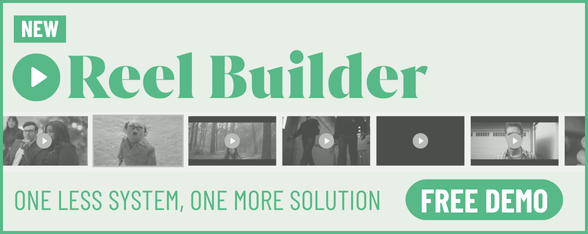
For Patrick Coffey, Your Greatest Skill Is You

Patrick Coffey has been navigating the worlds of design, animation and visual effects for 25-plus years. In 2004, after working with groundbreaking film and animation studios Mr X and Intelligent Creatures, he partnered in a commercial editing company and co-founded a boutique visual effects studio in Toronto, Canada. And in 2010, he helped found Tendril Design and Animation.
Over the years, Patrick has worked in almost every creative production role in the film and advertising industries, including many years as a flame artist and VFX supervisor. It is during that time that he developed an insatiable attention to detail, powerful communication skills, and a passion for solving creative challenges.
As an ECD at Tendril, Patrick is a champion of studio culture and employee growth, supporting teams as they push creative boundaries while also meeting client needs. He believes in designing with purpose, an agile workflow, and that empathy is the root of good communication and collaboration.
Patrick served on the board of award-winning commercial editing house Outsider Editorial, enjoys public speaking, was a professional swing dancer/teacher, and loves a good karaoke session.
Patrick recently sat down with LBB to reflect on the client pitch that shifted his own perception of his work, and the valuable lesson it taught him, which he continues to share with his team…
With over 25 years in this industry, I’ve learned many lessons, often more than once! But the most profound one came much later, sparked by the world-changing events of 2020, when my career came to a grinding halt.
Until then, my path had been a steady, if winding, climb. I started as a young computer science nerd, moved through technical direction, design, animation, and compositing, and eventually became a senior flame artist, creative director, and VFX supervisor at Tendril Studio. I was confident in my ability to create ‘artful and design-driven VFX’ that integrated seamlessly with live action.
Then, live-action work stopped.
Suddenly I was working from my basement with no projects that required my VFX skills. As the months dragged on, Tendril’s work shifted to abstract 3D motion graphics, an area that didn’t play to my strengths. I wasn’t a designer at the level of those around me, and I felt it. Meetings with brilliant minds like Chris Bahry and Alexandre Torres left me quiet and hesitant. I worried that without my live-action expertise, I had little to offer. The imposter syndrome was overwhelming, and like many people at the time, I slipped into depression.
Thankfully, my incredible EPs, Ramona Gornik-Lee and Maryanne Ledesma, and my partner, Alex, saw more in me than I saw in myself. That’s how I ended up shadowing Chris on a confidential pitch for a major client alongside director Mike Rigley. I watched them bounce around high-level ideas, spin up stunning style frames, and shape the creative vision. I could see epic moments in my head, but I lacked the confidence to speak up.
Eventually, I decided to put my ideas on paper. My style frames didn’t feel as polished as my teammates’, but they conveyed the concepts clearly. I hesitated to share them until the last minute, fearing they weren’t ‘good enough’. To my surprise, Chris included them in the pitch deck, and that small gesture gave me the confidence to lean in.
I dove into refining the deck, helping craft the narrative and language. By the time we presented, my fear had faded. Chris was sharp and thoughtful, Mike brought passion, and I added humour and energy; we did great!. Years of running a flame suite had made me an effective communicator, and I was in the zone.
When we finished, there was a long pause. Then, one of the creatives said, “We’ve always loved Tendril’s work and wanted to collaborate with you. This is exactly how I imagined it would be – incredible.” They went on to praise the thoughtfulness and beauty of our treatment, even calling out three of my style frames as standouts.
In that moment, everything shifted. I realised I was more than my hard skills. I brought vision, communication, taste, empathy, and personality – qualities refined over decades – that would never become obsolete.
Since then, I’ve led incredible teams on industry-defining projects, and this lesson has shaped how I lead. I create styleframes and share my ideas, even if they are unpolished, or unfinished, and I encourage my teams to do so. Even ‘dumb’ ideas are useful. They spark discussion, they can inspire better ideas, and they encourage team members who might be sitting on better ideas to speak up. The creative act requires vulnerability, and on a team, you need space to share that vulnerability.
Developing hard skills requires years of dedication, practice and maintenance, but it is the person behind those skills that imbues the work with life.
The best ideas can be ignited by anyone, whether a junior artist, a seasoned designer, or a production coordinator, so I tell my teams, “You’re here because we believe in you. You should never be afraid to share your work or ideas, even if they’re not perfect. You don’t have to be the perfect designer, animator, or producer. You just need to be the best you.”

















